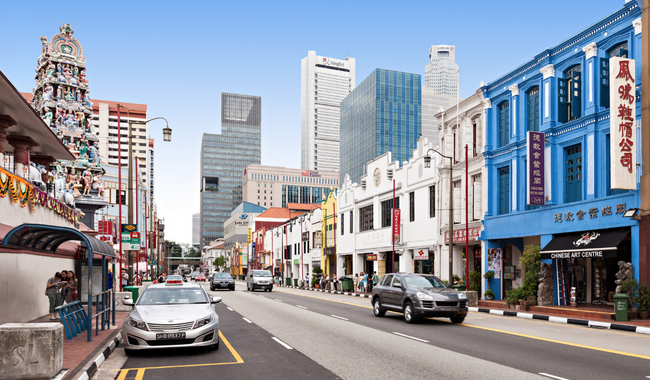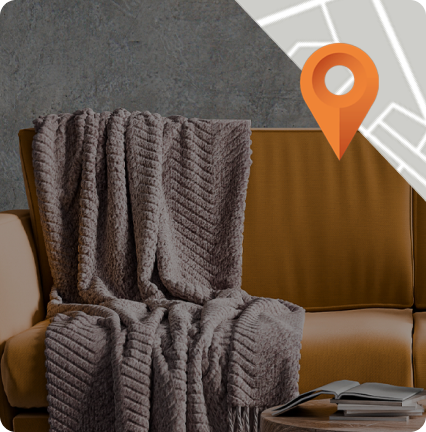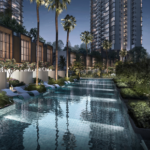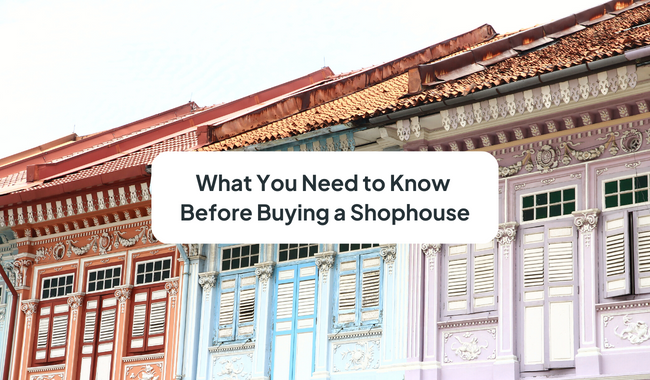Dating all the way back from pre-World War 2, shophouses were introduced to serve both commercial and residential purposes. Constructed between the 1840s and the 1960s, shophouses formed the majority of the pre-World War 2 urban fabric of the old city centre as well as several other parts of Singapore.
Shophouses can be zoned as both commercial and residential, with their specific use pre-determined by location and zoning. Shophouses with the strongest draw for investors are set in prime locations, have outstanding facades, and are approved for F&B, retail or other commercial use. We talk more about how and why a shophouse is a valuable investment here.
You can check a shophouse’s allowable use at URA’s Allowable Use For Shophouses & Selected Commercial Properties. Other compelling factors include their rich heritage or distinctive architecture.
Shophouses in Singapore have earned gazetted conservation status by the Urban Development Authority (URA), and come with several regulations on how you may use them, and the limited kinds of alterations you may make. We have compiled a list of things to look out for below.
Here are the 4 things you need to know before buying a shophouse
#1: Eligibility
Singaporeans and Permanent Residents are eligible to buy residential shophouses, while interested foreigners will need to get approval from the Land Dealings Approval Unit (LDAU) to acquire the property for residential use. Foreigners will not need to get the LDAU’s approval when purchasing a shophouse for commercial purposes.
#2: Different uses for different levels
A shophouse you buy may already have been pre-approved for certain uses. Let’s use 33 Tessensohn Road as a case study. When you run it through the URA Allowable Use e-Service, you will see that it is zoned “residential with commercial at first storey”.
There are several allowed uses for the first storey, including a shop, restaurant and bar, or takeaway food shop. However, as the Restaurant and Bar use was approved on Temporary Permission, you are subject to a renewal application when the use expires.
On the same note, while you may apply for a change of use should you want to open a childcare centre, laundromat, or spa, you will have to submit a Change of Use Application subject to evaluation and approval.
Other uses for shophouses that are not allowed: night clubs and restaurants with live music or performances.
$3: Taxes incurred when buying a shophouse
The tenures of shophouses can range from 99, to 999 years, to freehold. The remaining lease will impact your loan quantum to finance the property. Also, different zoning will come with different taxes which will cut into your profit margin.
Singaporeans, PRs and foreigners are all subject to Buyer’s Stamp Duty (BSD) for up to 4% of the residential component and up to 3% of the commercial component of the shophouse.
Even if you buy a shophouse with mixed commercial and residential use, the residential component will be subject to ABSD, if you already own a residential property in Singapore.
#4: Gazetted conservation status of a shophouse
While this elevated status makes it a draw for investors as it is a stamp of rarity, it is a double-edged sword.
Different districts have different regulations on what you can or cannot do to the building. Shophouses in the Historic Districts are in the oldest locations in Singapore — Boat Quay, Chinatown, Kampong Glam and Little India — and must be retained and restored in their entirety.

Residential Historic Districts like Blair Plain, Cairnhill and Emerald Hill usually come with a premium price tag. Nestled in or around the Core Central Region, owners are allowed to build a new rear extension that does not exceed three storeys and the main roof level.
Secondary Settlements such as Geylang and Joo Chiat were developed later than the first two, with a focus on retaining the streetscape. Here, shophouses are allowed rear extensions up to five storeys.
Knowing the style your shophouse was built in will also help you understand the limitations on your maintenance and the extent of alterations you are allowed to make. The Early Shophouse Style may show more obvious signs of ageing or wear and tear, and may require more upkeep. Meanwhile, the Art Deco Shophouse Style may be a visual feast but will also be a dent in your wallet if it requires specialised restoration work. Learn more about the different shophouse styles here.
Want your next home to be a shophouse? Let us help!

Let Ohmyhome’s smart data-matching technology MATCH you with the right home, according to your specific needs. Submit your preferences to us and our algorithm will filter all our available listings based on those, and we’ll WhatsApp them to you once we find a match. We’ll also send you relevant content that you can use for your research and inform your home buying decision, so you no longer have to spend hours searching online for the information that you need. Because at Ohmyhome, we’re always by your side, always on your side.
Secure an appointment with any of our Super Agents by dropping us a message on WhatsApp or via our Live Chat at the bottom, right-hand corner of the screen.



































































